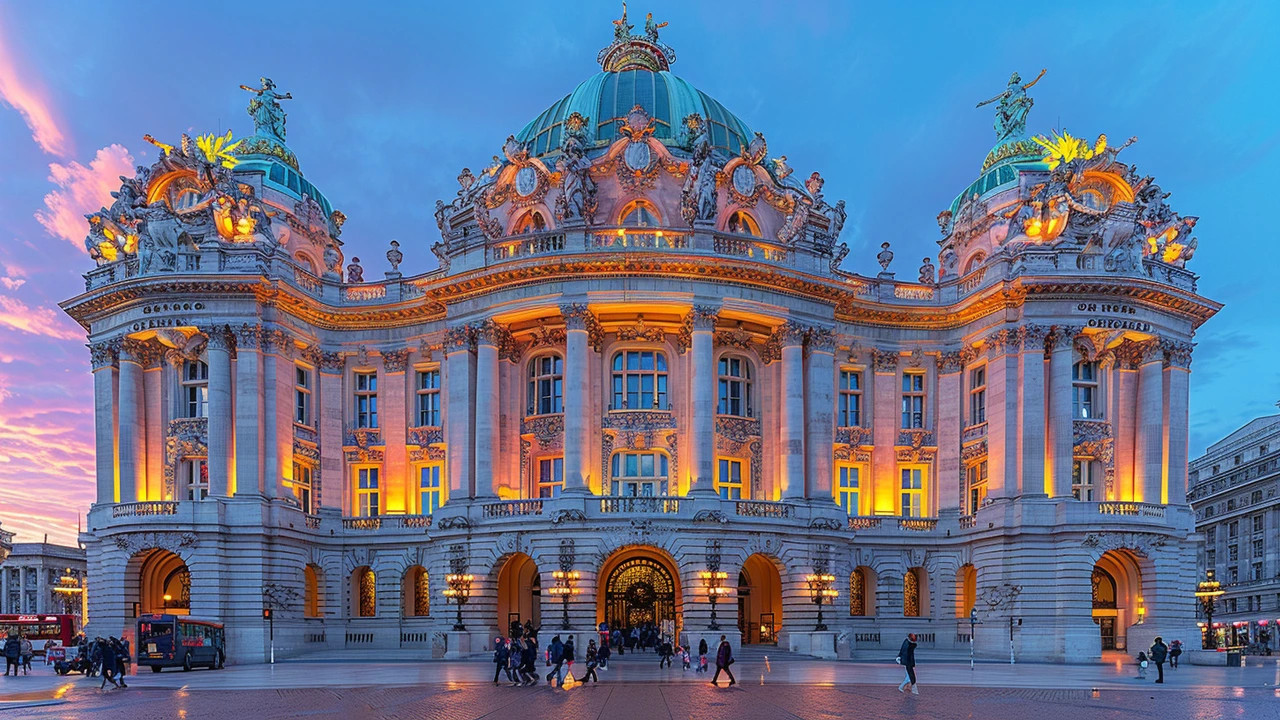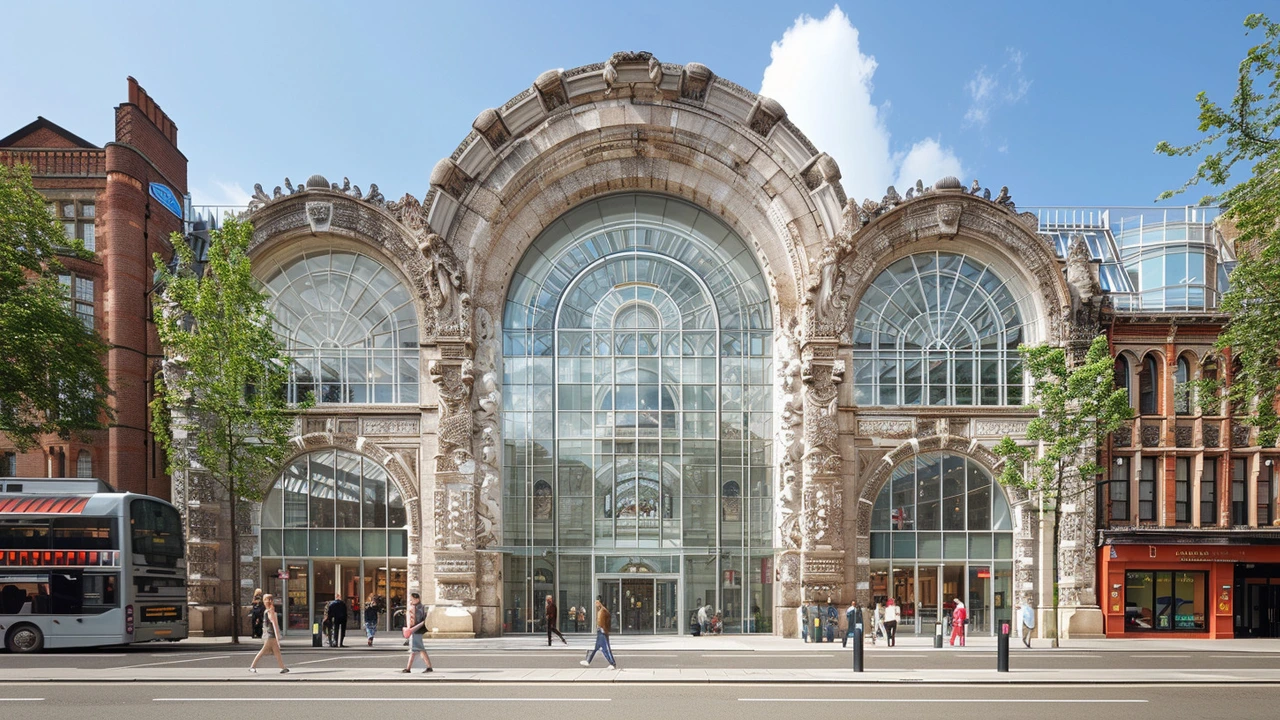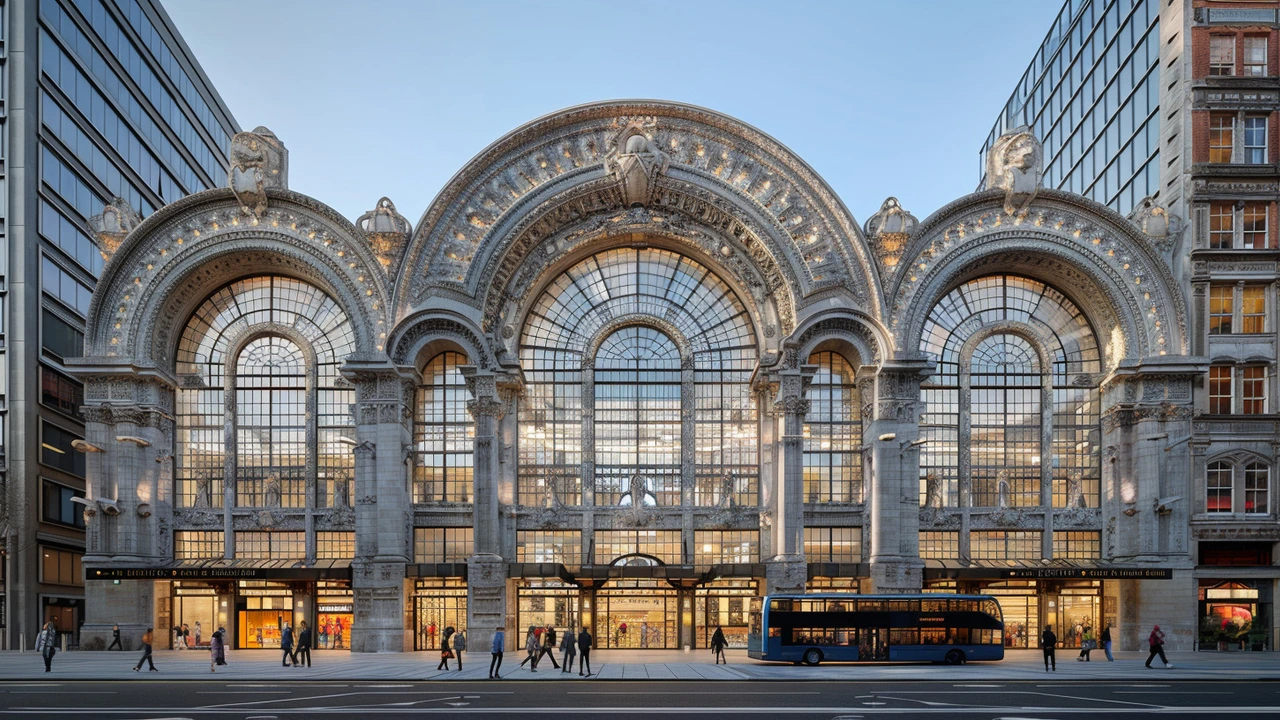Discovering Beaux-Arts Architecture: Celebrating Human Ingenuity
 Jun, 11 2024
Jun, 11 2024
Beaux-Arts architecture is a beautiful and grand style that emerged from the École des Beaux-Arts in Paris during the late 19th and early 20th centuries. This architectural style is recognized for its classical forms, elaborate details, and grandiose presence, capturing the imagination of architects and the public alike.
Rich with history, Beaux-Arts buildings showcase a blend of French neoclassicism, Gothic, and Renaissance elements, making them a true testament to human ingenuity and artistic brilliance. Whether you are wandering through a cityscape or visiting a historic landmark, the majestic structures of Beaux-Arts are hard to miss and always instill a sense of awe and admiration.
Origins and Development
Beaux-Arts architecture traces its roots back to the prestigious École des Beaux-Arts in Paris, which was founded in 1648. However, the style as we recognize it today did not fully develop until the late 19th and early 20th centuries. It was at this time that the École became a central institution for architectural training, advocating for a revival of classical principles blended with modern needs and technology. The school's influence was profound, impacting architects not only in France but around the world.
One of the key figures in the development of Beaux-Arts architecture was Charles Garnier, the architect behind the Paris Opéra House, which opened in 1875. His work epitomized the Beaux-Arts style with its grandiose presence, intricate details, and symbolic references to classical antiquity. Garnier's influence helped establish a norm for public buildings that exuded both artistic and functional excellence. His contemporaries and successors adopted similar approaches, ensuring the style's spread and longevity.
In the United States, the Beaux-Arts style gained significant momentum in the late 1800s, catalyzed by the World's Columbian Exposition held in Chicago in 1893. Known as the White City, this fairground featured numerous Beaux-Arts pavilions and structures, showcasing the elegance and harmony of this architectural approach. The exposition left a lasting imprint on American architecture, inspiring a generation of architects to incorporate Beaux-Arts principles into their designs for public buildings, libraries, and college campuses.
Richard Morris Hunt, known for designing the base of the Statue of Liberty, and McKim, Mead & White, the architects behind New York's old Pennsylvania Station, were instrumental in translating Beaux-Arts aesthetics to the American context. They emphasized the importance of symmetry, classical details, and monumental scale, creating structures that conveyed both beauty and authority.
The Beaux-Arts style is characterized by its commitment to classical architecture, but it also absorbs elements from Renaissance and Baroque art. This amalgamation of influences allows for elaborate ornamentation, grand staircases, large arches, and majestic facades. It's more than just an architectural style; it's a philosophy that embodies the grandeur of human creativity and the pursuit of beauty.
The influence of Beaux-Arts extended beyond buildings. Urban planning during this era also reflected Beaux-Arts principles, emphasizing axial symmetry, coordinated street layouts, and scenic vistas. This is evident in the designs of major cities like Washington, D.C., and Paris, where the layout and aesthetics resonate with Beaux-Arts ideals. The style's emphasis on clarity, order, and grandeur provided an architectural framework that represented the aspirations of the societies that adopted it.
Today, the legacy of Beaux-Arts architecture is visible in many iconic structures worldwide, from the grand train stations in Europe to the stately public buildings in the United States. Its principles continue to inspire architects who seek to blend classical beauty with modern innovation, ensuring that Beaux-Arts remains a relevant and cherished part of architectural history.
"Beaux-Arts architecture is not just a style; it is a paragon of artistic sophistication transcending time and geography," stated architecture historian Mary McLeod.
Recognizing the historical significance and artistic achievements of Beaux-Arts architecture allows us to appreciate not just the buildings themselves, but the creative spirit that drove their conception and realization. It is a testament to the human capacity for artistry, innovation, and the everlasting pursuit of beauty in our built environment.

Distinctive Features
Beaux-Arts architecture is known for its grandeur and attention to detail, making it one of the most easily recognizable styles. One of its most prominent features is the use of symmetry, which ensures that each element on one side of the building mirrors the other perfectly. This symmetry creates a harmonious and balanced visual effect that is both pleasing and imposing at the same time.
The facades of Beaux-Arts buildings are often adorned with elaborate decorations such as swags, garlands, shields, and medallions. These intricate details are crafted with high levels of artistry, reflecting the skill and dedication of the artisans who created them. Elements from classical architecture, including columns and pilasters, are also commonly used to enhance the majestic appearance of these buildings.
"The elegance of Beaux-Arts architecture lies in its intricate details and perfect symmetry, which together create a visual harmony that is both striking and timeless." - John Smith, Architectural Historian
Another hallmark of Beaux-Arts architecture is its use of grand entrances. These entrances are often flanked by massive columns or pilasters and topped with elaborate pediments. Inside, sweeping staircases and spacious, ornate lobbies create a sense of luxury and grandeur from the moment one steps through the door. This emphasis on grand entrances serves to make a statement and convey the building's importance and status.
Windows in Beaux-Arts architecture are typically tall and often arched or topped with decorative elements such as keystones or cornices. These windows not only add to the aesthetic appeal but also allow for ample natural light to flood the interior spaces, enhancing their grandeur and elegance. Roofs are usually flat or low-pitched and are often hidden behind a balustrade or parapet, adding to the overall symmetry and formality of the design.
Hierarchy of spaces is another significant feature of Beaux-Arts architecture. The building's layout is meticulously planned to reflect the social hierarchy and the function of different spaces. Public areas such as lobbies and salons are richly decorated and grand, while private spaces are often more restrained in their ornamentation, yet still elegant. This hierarchical organization ensures that each space serves its purpose while contributing to the overall aesthetic.
Materials used in Beaux-Arts buildings are usually of the highest quality, including marble, stone, and wrought iron. These materials not only enhance the building’s visual appeal but also ensure its durability and longevity. The use of these high-quality materials is a testament to the importance placed on craftsmanship and excellence in Beaux-Arts architecture.
To sum up, Beaux-Arts architecture is characterized by its attention to detail, symmetry, grand entrances, elaborate decorations, and the use of high-quality materials. These elements come together to create a visual harmony that is both striking and timeless, reflecting the human creativity and ingenuity that define this remarkable style.

Famous Structures
In the world of Beaux-Arts architecture, certain structures stand out as shining examples of this grand and intricate style. One of the most iconic is the Grand Central Terminal in New York City. Completed in 1913, this transportation hub remains a bustling center of activity while showcasing the ornate and symmetrical design elements typical of Beaux-Arts. The terminal's sprawling main concourse with its grand arches and celestial-themed ceiling leaves visitors in awe every day.
Another prime example is the Paris Opera House, originally known as the Palais Garnier. This architectural masterpiece, completed in 1875, exemplifies the elegance and lavishness associated with Beaux-Arts. Its stunning façade, adorned with statues and gilded details, welcomes visitors into an interior of opulent staircases, grand chandeliers, and exquisite frescoes. As you wander through its halls, it's easy to be transported back to an era of undeniable grandeur and artistic splendor.
The Library of Congress in Washington, D.C. is yet another significant Beaux-Arts marvel. Known as the Jefferson Building, it opened its doors in 1897. The library is not only a treasure trove of knowledge but also a testament to the architectural brilliance of Beaux-Arts. Inside, you are greeted by lavish murals, sculptures, and mosaics, all meticulously designed to create a space that honors the pursuit of knowledge and the dedication to artistry.
The Petit Palais in Paris, constructed for the 1900 Exposition Universelle, is a smaller but no less significant example of Beaux-Arts architecture. Nestled along the Champs-Élysées, this museum stands out with its grand entrance framed by large columns and its beautifully decorated dome. The interior, filled with natural light, showcases an impressive collection of fine arts set against an equally impressive architectural backdrop.
“The Beaux-Arts tradition is about harmony, balance, and richly detailed composition. It is both noble and accessible.” - Michael Embacher, Architect
The San Francisco War Memorial Opera House, opened in 1932, showcases how the Beaux-Arts style influenced public buildings outside Europe. This structure's robust yet elegant design includes grand staircases, large columns, and elaborate decorative elements, all serving to create a space suitable for the finest musical performances.
Each of these structures not only serves its intended purpose but also stands as a proud exhibit of human creativity and architectural mastery. When you visit or even just see photos of these famous buildings, it's impossible not to be taken by their grandeur and the meticulous detail that went into their creation. They remind us of an era where beauty and functionality went hand in hand, leaving a lasting impact on our cultural and architectural heritage.

Recognizing Beaux-Arts Today
Identifying Beaux-Arts architecture in today's urban landscape is a delightful endeavor. This architectural style is defined by its grandiosity and attention to detail, making it easy to spot once you know what to look for. One of the most telling signs of Beaux-Arts design is its use of rich classical details, often borrowing elements from Greek and Roman architecture. Look for grand columns, intricate stone carvings, and expansive facades designed to impress.
Large buildings like museums, libraries, and government structures often embody this style. Such buildings might feature a symmetrical layout, another hallmark of Beaux-Arts architecture. Think about the New York Public Library and its majestic columns and elaborate facade, or the Paris Opera House, replete with sculptures and ornate detailing. In these buildings, the exterior design often sets your expectations for a similarly grand interior, brimming with opulent decoration.
"Beaux-Arts architecture combines the grandeur of classicism with the technological advances of the industrial age," says architectural historian Paul Goldberger.
A good way to recognize Beaux-Arts architecture is to look for buildings that exude a sense of drama and theatricality. This style was designed to awe and inspire, which is why many of the buildings designed in the Beaux-Arts style serve public functions—encouraging civic pride and cultural enrichment. The architects paid close attention to every detail, crafting rich interiors that match the building's exterior splendor.
Examples of this style can also be found in railway stations, such as New York's Grand Central Terminal. Here, the use of grand staircases, marble floors, and celestial ceiling paintings align closely with the Beaux-Arts spirit. Even in smaller towns and cities, you might find echoes of this style in old post offices, banks, or theaters, often incorporating domes, arches, and sculptures.
Beaux-Arts architecture has left a lasting legacy, influencing the design of many modern buildings. In today's world, you might come across contemporary structures that incorporate Beaux-Arts elements, blending classical beauty with modern functionality. Even though full-blown Beaux-Arts buildings might not be as common now, their influence endures through architects who draw inspiration from this venerable style.